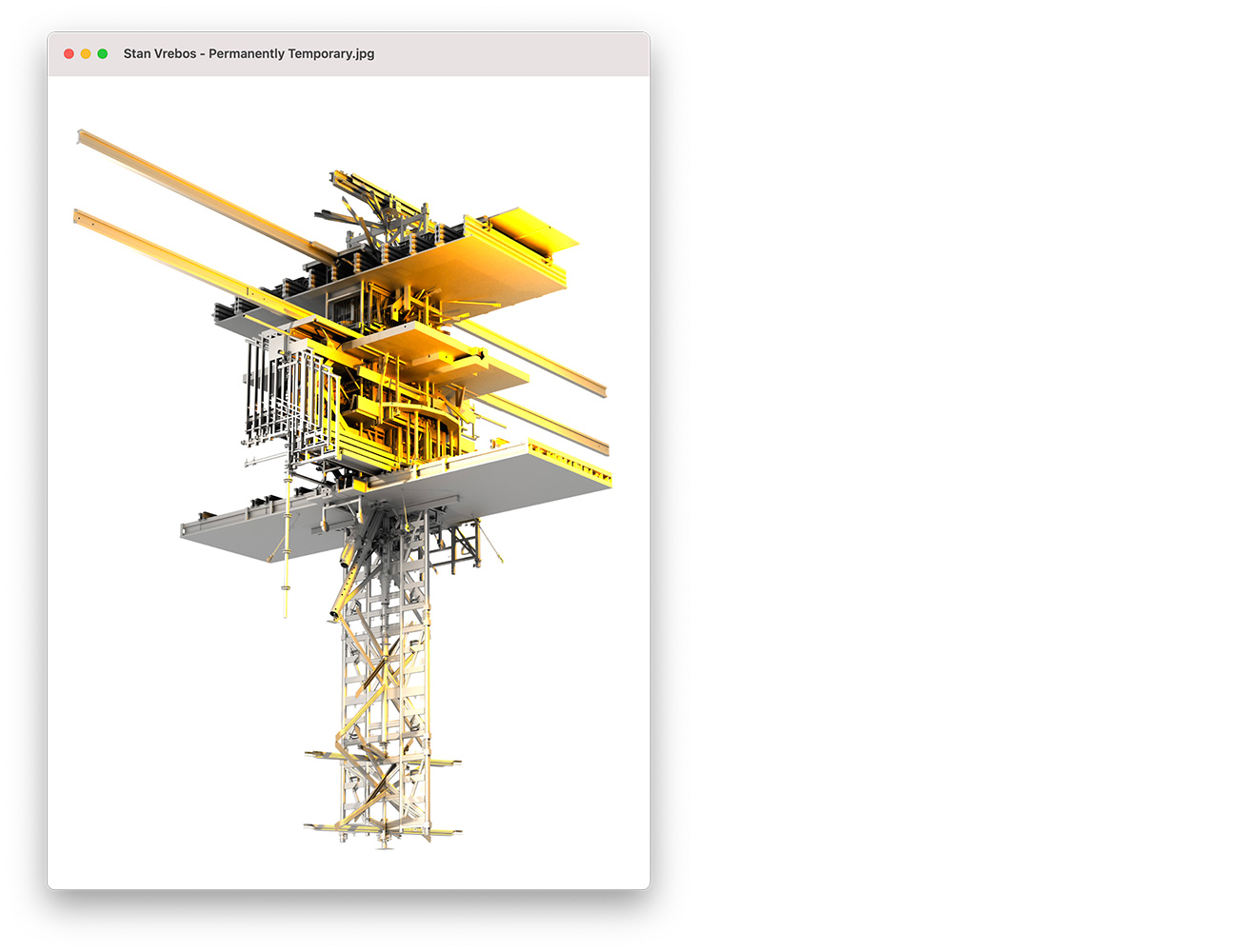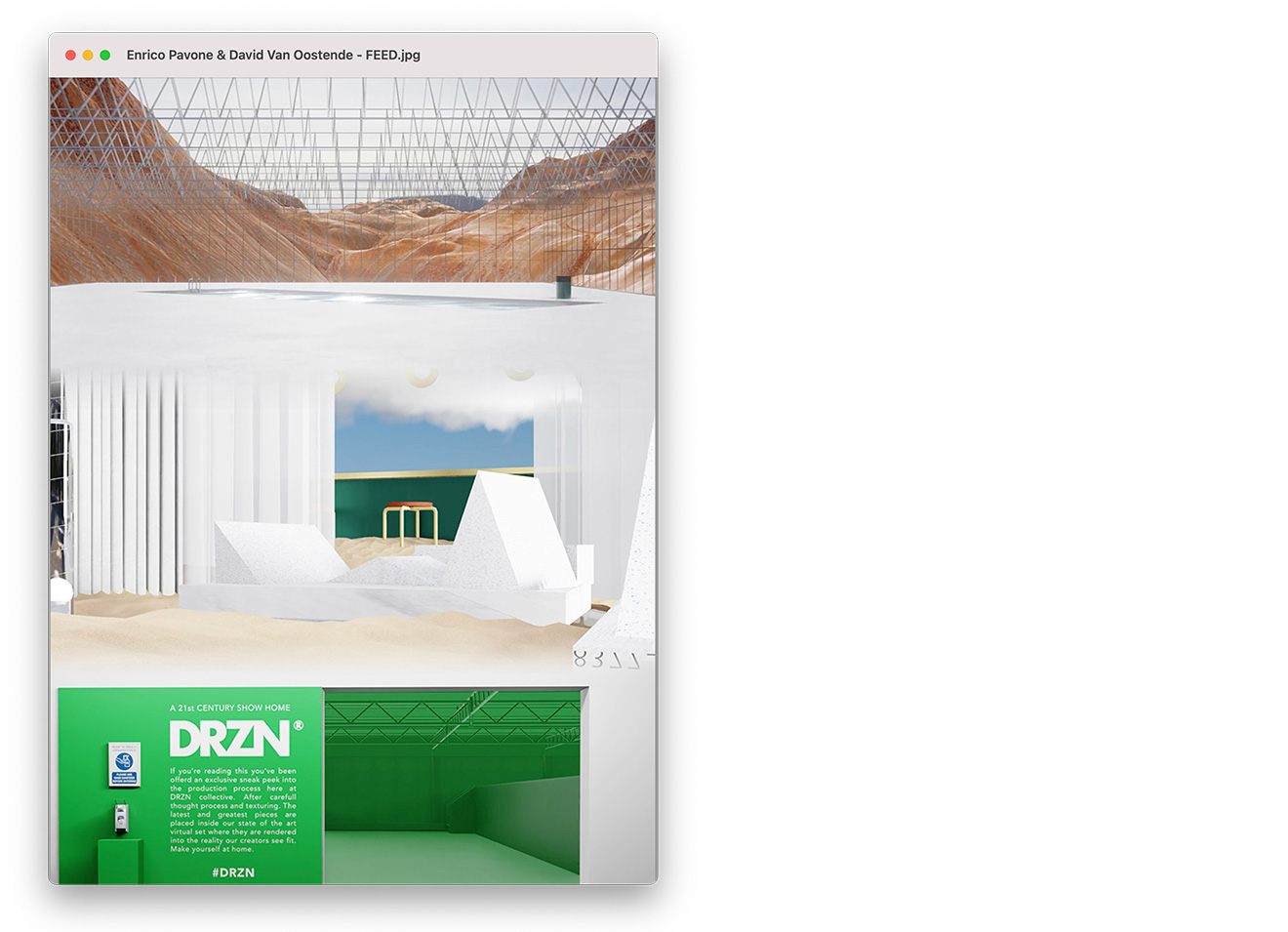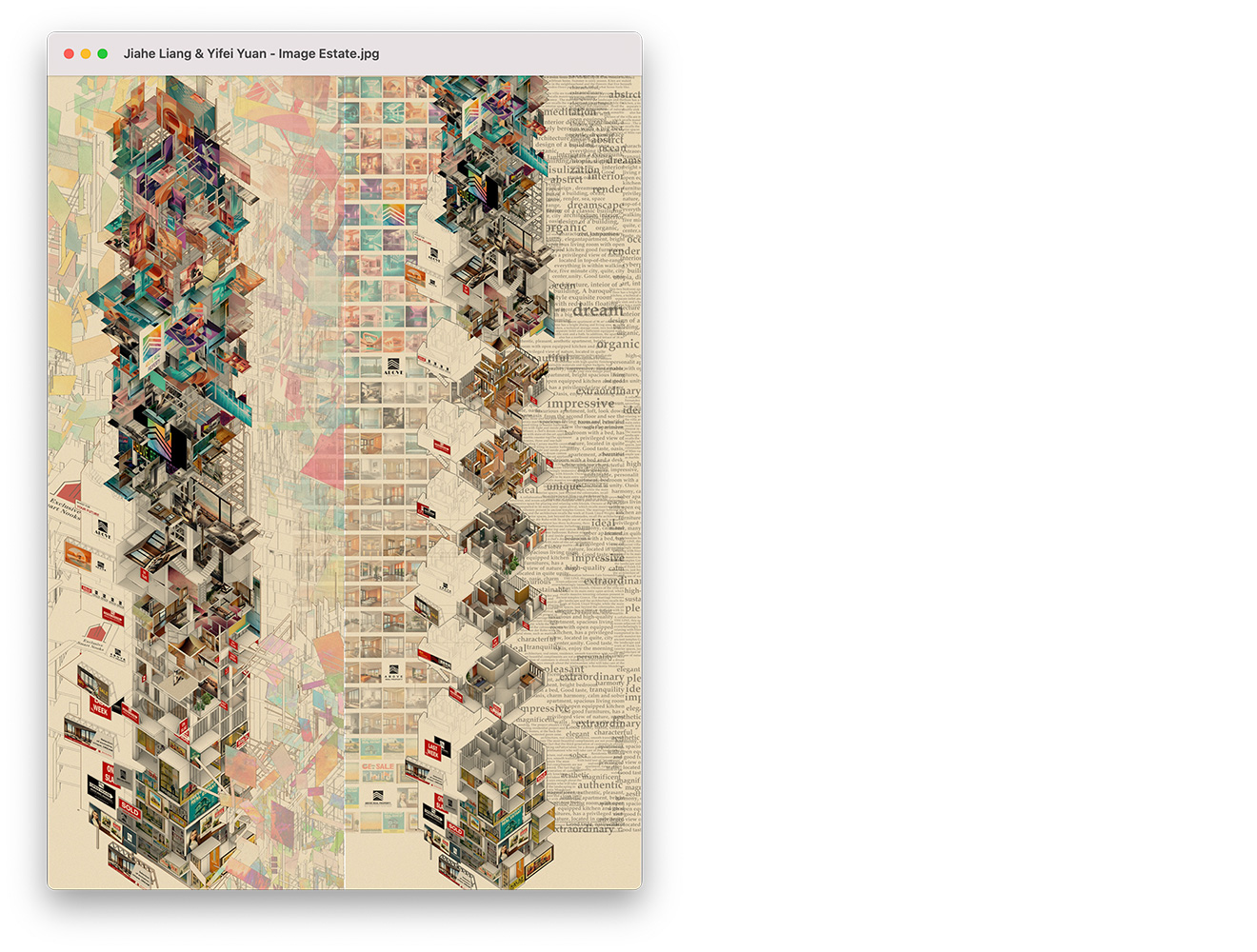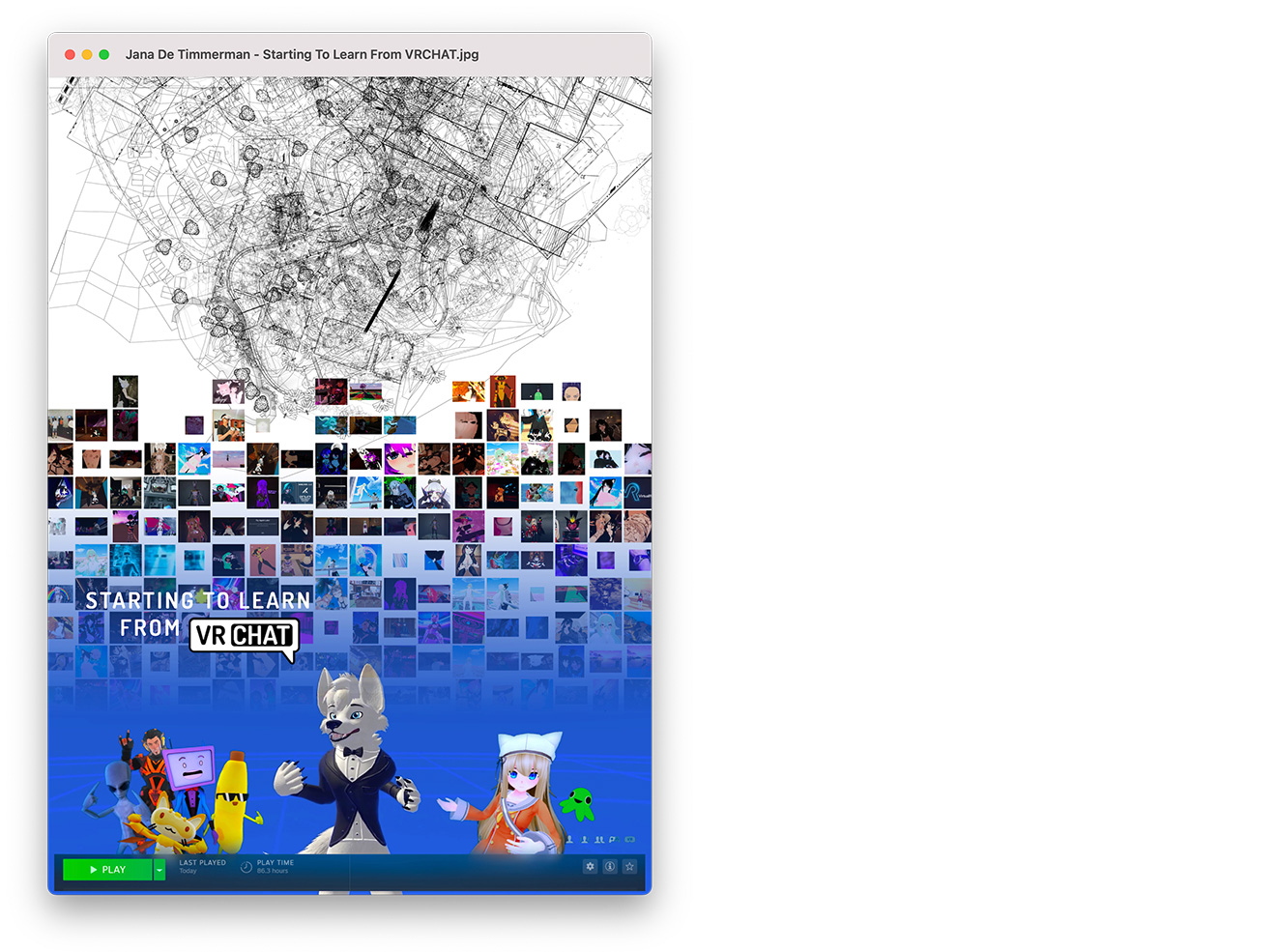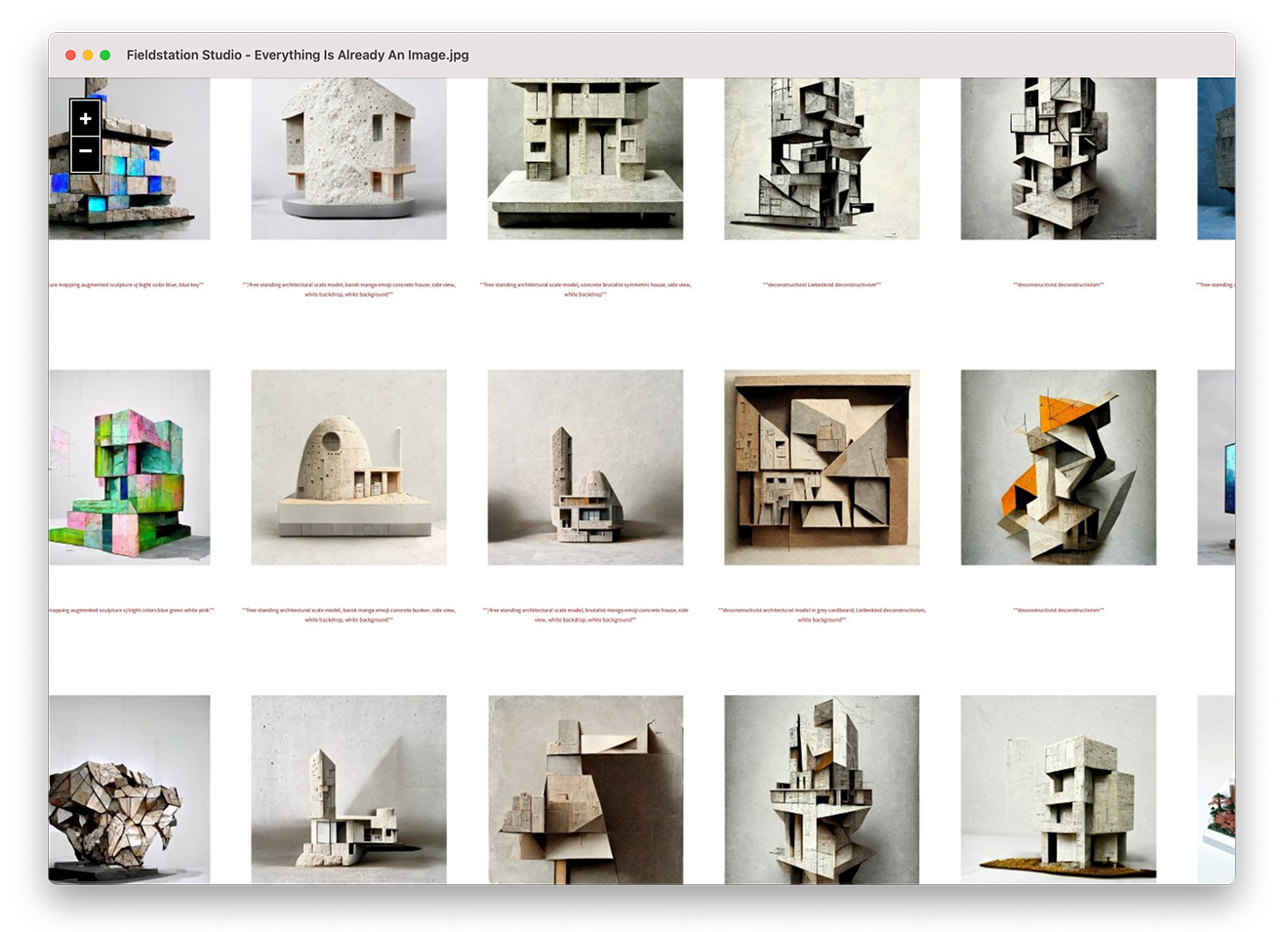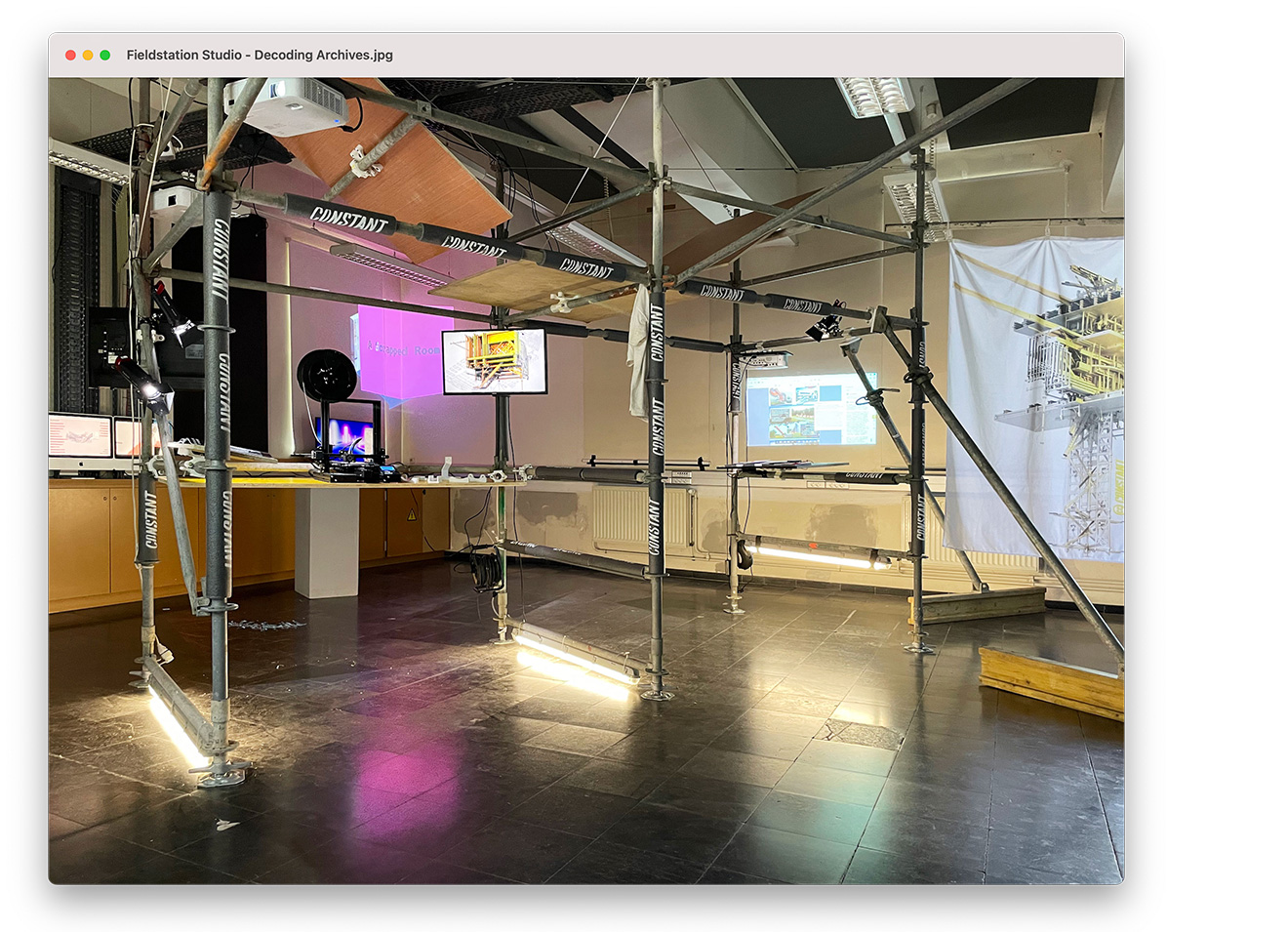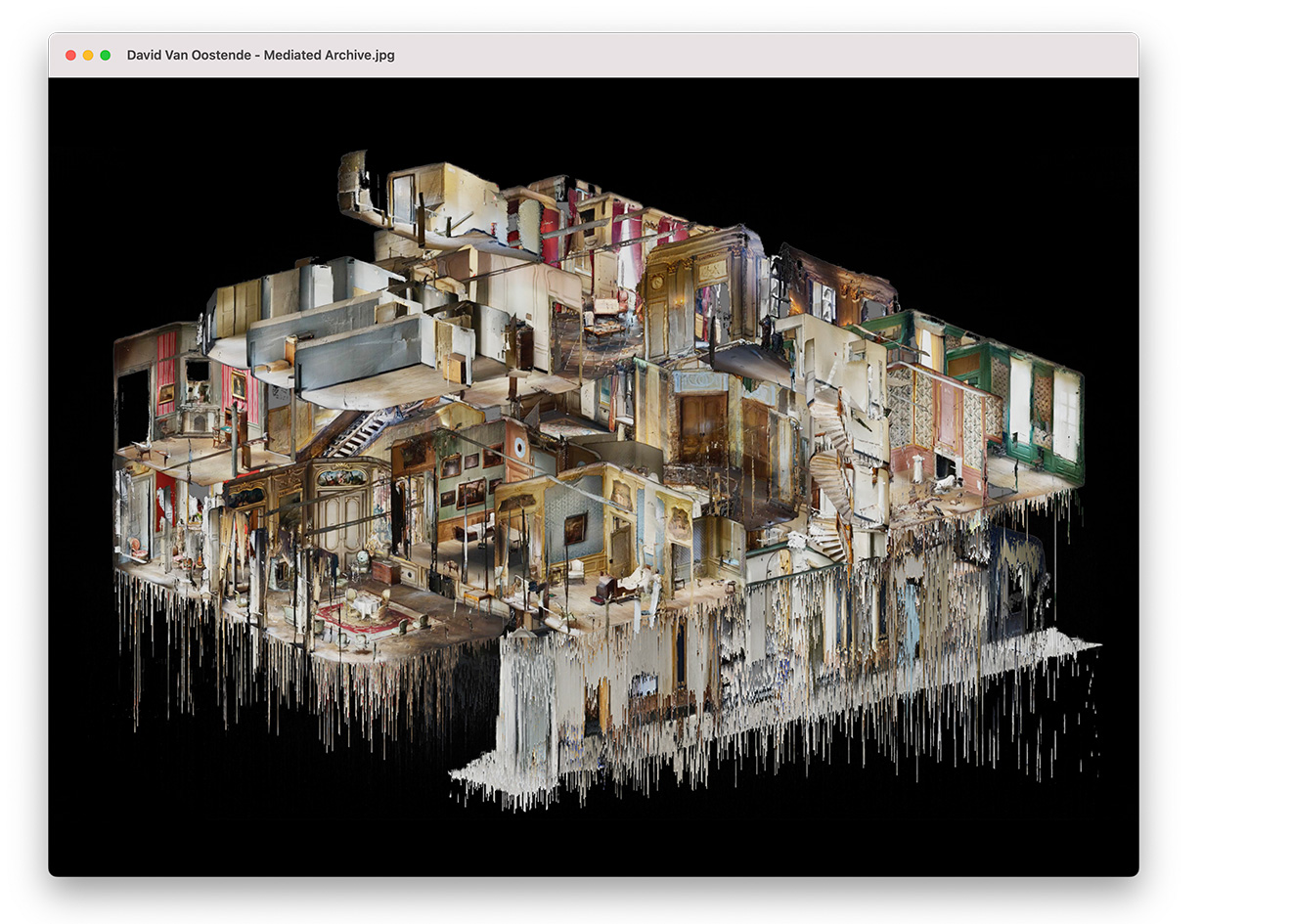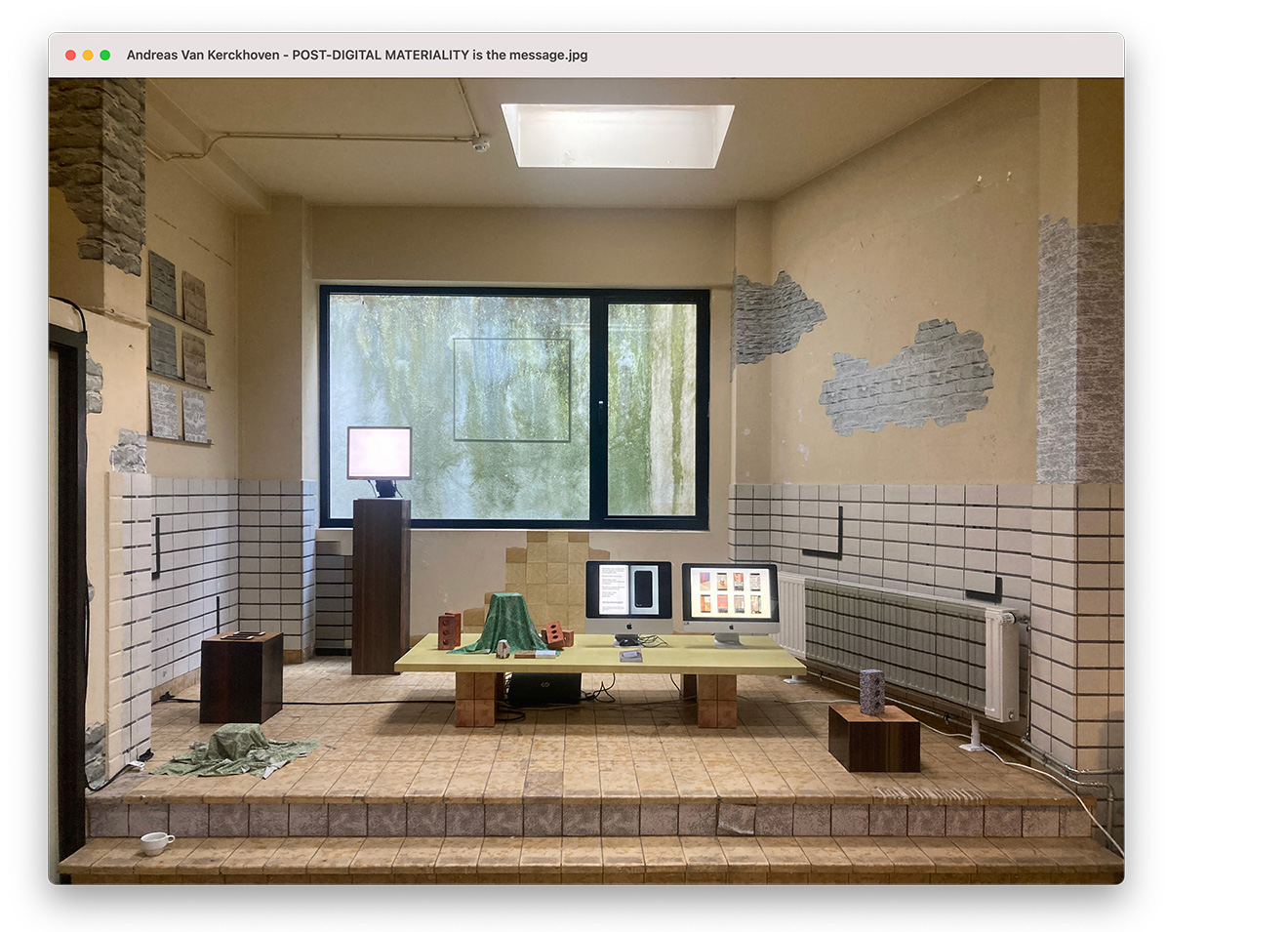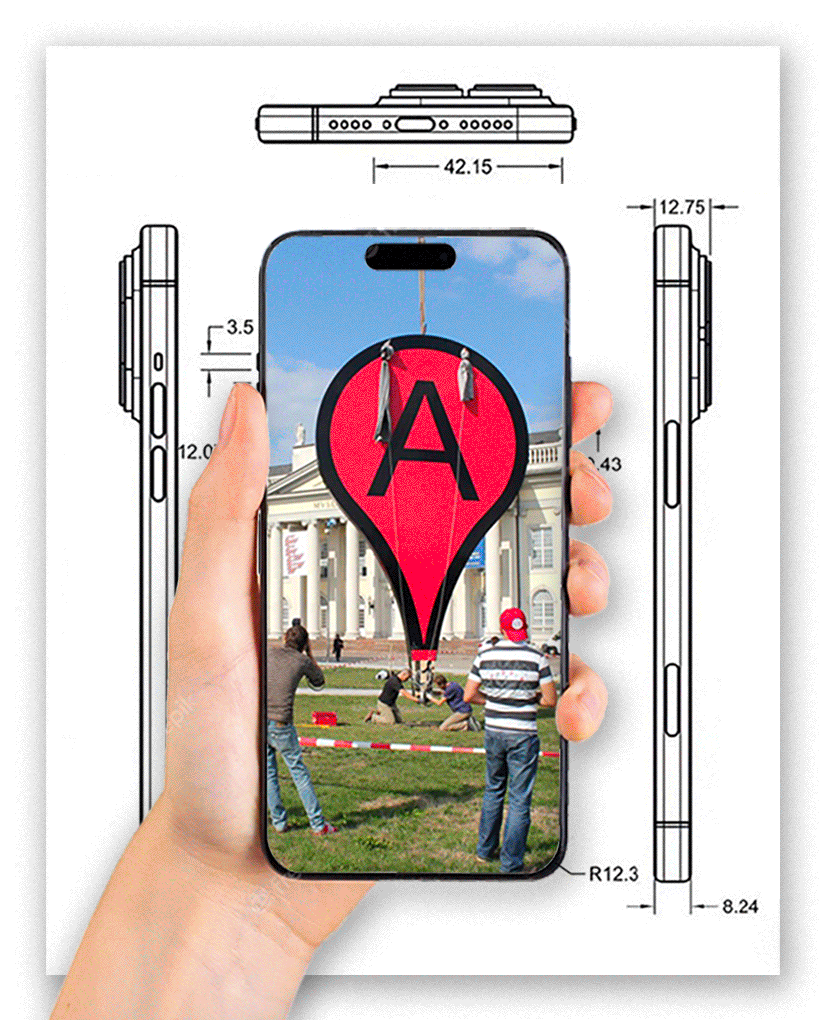Fieldstation Studio: Building Images – Post Digital Constructs
Master studio 2023-24, sem 1
Campus Sint-Lucas Ghent
Tutors: Michiel Helbig, Corneel Cannaerts
Engagement: Mediating Tactics
In Fieldstation Studio we explore how architecture might respond to the proliferation of networked digital technologies in our environments and the resulting media ecologies in particular. In this edition of Fieldstation Studio we want to critically investigate the status and contemporary post-digital image production in architectural design, in particular how they mediate processes of making and construction. We will do this through research, reading key texts, mapping references, establishing a lexicon, experimentation, hands on introduction into digital making processes, and through developing speculative architectural prototypes. We will build a collective body of work through individual assignments and group work.
Our houses, cities and environments have increasingly become saturated with digital technologies, to such a degree that they impact all aspects of our lives and are noted by their absence rather than their presence. Camera’s, tracking devices, sensors and scanners are constantly mapping our environments, activities and behaviors. People are increasingly sharing all aspects of their lives through social media and image and video sharing platforms. The vast amount of information gathered by these technologies and platforms is not limited to the media artefacts themselves, it is tagged with metadata and processed and filtered through algorithms, forming a hyperlinked graph, an ecology of connected data. This increasing amount of data, this media ecology [1] is no longer a passive representation of our environment but is actively informing and steering how we design, inhabit and maintain environments.
Architecture is increasingly designed, constructed and experienced through digital media, and digital images in particular, play a central role in architectural design and construction. Architects have mainly approached the digital as just another version of familiar tools for designing and producing architecture. We can trace the interests of architects in the digital from formal exploration with digital modeling software, over prototypical experimentation with digital fabrication and material articulation to the recent ventures into data driven design. However, the predominately instrumental approach of digital technologies, left architecture largely blind to the deep societal, environmental and cultural impact of digital technologies. While emerging technologies have become inextricably interwoven in the very fabric of our environments and permeate our visual cultures, architects seem to lack the capacities and tools, or even willingness, to engage this ubiquitous technological layer, this post-digital [2] condition.
While in architecture we use the terms drawing, image and renders interchangeably, through digitalisation they have all in fact become images [3]. Within Fieldstation Studio we have been developing several projects on algorithmic vision and post-digital images, which explore how architecture and urban design, disciplines relying heavily on the visual senses, respond to novel ways of seeing, mapping and visualizing our world. We acknowledge that the media ecologies and visual cultures these technologies give rise to, are not merely representing but actively shaping the environments in which we operate [4]. Our Master Studio on Artificial Images in 2022 focussed on the shift from drawing to image, from representation to simulation and what this means for architectural practice and culture.
For this edition Building Images: Post Digital Constructs, we will focus on how digital images mediate processes of construction and increasingly manifest themselves in the built environment. Through technologies like 3D scanning, sensors, image sharing platforms, social media, 3D software, data driven and computational design and digital fabrication, the border between digital and material becomes increasingly blurry, resulting in a post-digital materiality [5]. The computational nature of images allows them to be processed, calculated, filtered, tagged and manipulated, they can be endlessly duplicated and transmitted and are inherently dynamic and transformable. The increasing role of digital images in architecture, does not just affect the speed and reversibility of design processes, but fundamentally impacts how architecture is represented, conceived and understood, and constructed!
This is the second edition of a trilogy of studios that will explore the post-digital in architecture, critically investigating the impact of emergent digital technologies on the practice and culture of architecture. Over the three editions we will explore the meaning of the post-digital for how we design, materialize and experience architecture, but also how architecture is affected, disseminated and discussed through visual cultures and media ecologies.
more info: https://www.fieldstationstudio.org/
[1] Taffel, S. (2019). Digital media ecologies: Entanglements of content, code and hardware. Bloomsbury Academic.
[2] Cramer, F. What Is ‘Post-digital’?. In: Berry, D.M., Dieter, M. (eds) Postdigital Aesthetics. Palgrave Macmillan, London. https://doi.org/10.1057/9781137437204_2, 2015
[3] See May, J. Everything Is Already an Image, Log 40, 2017.
[4] Young, M. Reality Modeled After Images, Architecture and Aesthetics after the Digital Image, 2021
[5] Abrons, E. and Fure, A. “Postdigital Materiality.” in Lineament: Material, Representation, and the Physical Figure in Architectural Production, edited by Gail Peter Borden and Michael Meredith, Routledge, 2017, pp. 185-195
